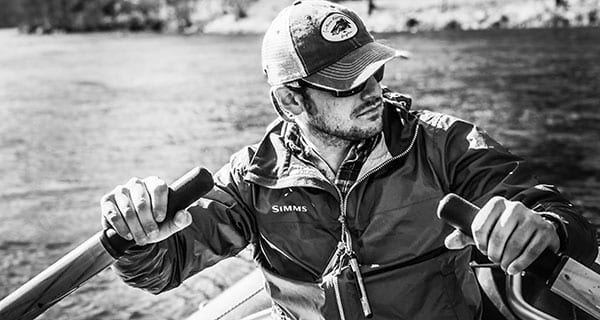The Results of a Year Long River Clean Up in Western North Carolina (Part 1)
Working as a guide gives me the unique opportunity to spend the majority of my time out on the different rivers and streams that I guide on. When you spend a dedicated amount of time on any stretch of river, you can’t help but start to notice details that others oftentimes miss. Most people imagine picturesque scenes of mountain rivers when they think about fishing in Western North Carolina. Much what I envision, especially after this past year, is a picture perfect scene with unnecessary, preventable, and oftentimes obscene amounts of pollution in the form of trash. To make a long story short, I got tired of seeing it all. Being an Appalachian native and having my roots traced back 300 years in these mountains, the thought of the streams and rivers here, my home, being used as a garbage dump was disheartening enough to where I became motivated to actually try and do something about it, particularly with the incredible amount of pollution coming from plastics and chemical based products.
So, as of January 2019 I have dedicated myself to going out at least once a week to remove a minimum of one 33-gallon trash bags worth of garbage out of the streams I fish and guide on. This, in turn, led me to log a quantifiable number in order to determine an accurate approximation of how much and what kinds of trash I was removing, and to try and summarize, at the end of the year, the effect it is potentially having on our own fisheries. The results as of this article being written have been outstanding, and at times shocking.
I started by simply going out to aquatic streams and adjacent riparian zones and counting, by hand, how much I was finding, in terms of trash, categorizing what I found and narrowing it down specifically to plastic pollution and chemical product containers such as motor oil bottles, household cleaners, etc. I would also make a note of any other items found that could have some sort of environmental impact to the ecosystem or even health impacts to people visiting those places. That data has been kept in an ongoing spreadsheet showing the location, date, amount of plastic items, amount of chemical products found, the amount of plastic bags specifically found, and any other items of interest. The totals as of December 6th, 2019 are as follows:
Approximately 86.5, 33-gallon trash bags were filled, within them containing approximately 9,364 individual pieces of plastic. Out of those totals: 46, 33-gallon bags and 5,446 pieces of plastic came from the waterways in Mitchell County, NC, where I live. Almost every time trash was removed, I would find at least one if not more bottles of chemical based products, mainly used motor oil, which at a minimum, still contained trace amounts of that product and, at worst, were completely full and leaching into the aquatic environment. Copious amounts of plastic bags in whole or in shards were found hanging in the surrounding plants growing in the riparian zone. One of the most shocking and disturbing things that I stumbled across this year was the amount of hypodermic needles that are present in our waterways, with over 30 being (carefully) removed and disposed of properly. Those numbers do not count the incredible amount of other items removed, mainly because I was trying to log items that do not decompose organically.
So, what does this all mean? If my numbers are even close to accurate, it can then be assumed that there is an unfathomable amount of pollution in the form of trash that can and will have a potential impact on aquatic ecosystems here in the mountains.
I wanted to share my results in a public forum as a way to start meaningful dialogue between anglers, guides, and other members of the outdoor community as to what the potential impacts are, and what can be done to help negate the future affects to our mountain streams. I believe wholeheartedly that it ultimately comes down to us as anglers to take care of the places we fish and guide on. We cannot continue to take this fragile and overused resource for granted without doing our part to take care of it. I will highlight more on where I think this trash comes from, how we can negate it, and what you, as an individual, can do to help in what might be one of the biggest conservation issues facing the Southern Appalachians in Part 2 of this article in the next issue of The Angler Magazine: Great Smoky Mountains Edition.
A special thanks to the folks at 2% for Conservation, Southern Appalachian Anglers, and to many friends and family who have helped and supported me in this effort this year.
Ethan Hollifield is an Environmental/Physical Science Teacher and is also a guide for Southern Appalachian Anglers.
